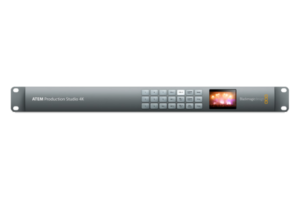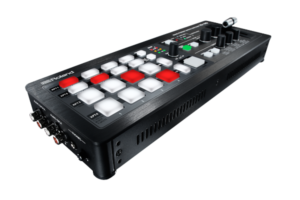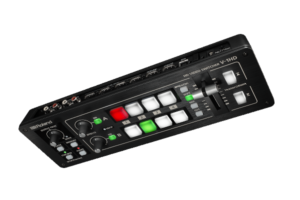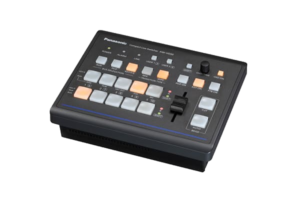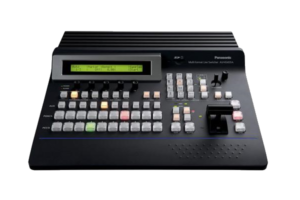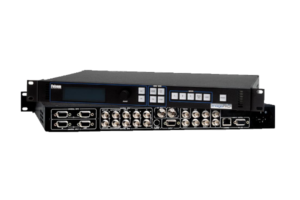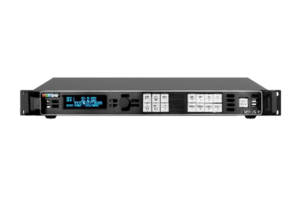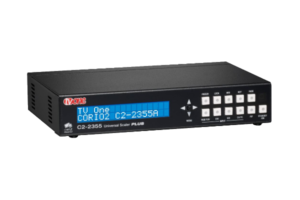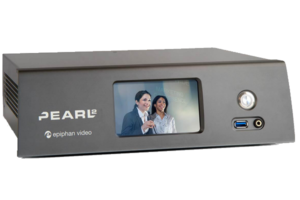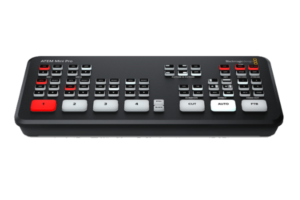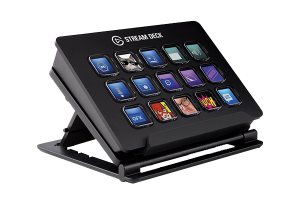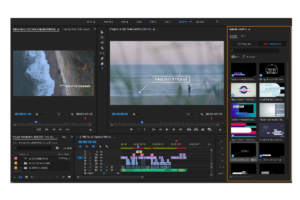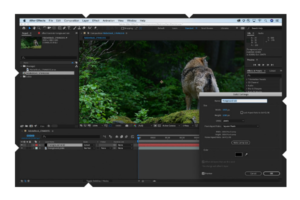Home » Event technology » Direction technology
Direction technology
Take control of your precious film productions. With control room technology from AVMS GmbH, you get professional tools for switching and scaling your video sources. No matter whether you want to make recordings or transmit the signals directly via the Internet to the wide world. We also have the right solutions for post-production.
Image mixer
A video mixer (also called a trick mixer) is a device used to switch between different video sources, mix them, or sometimes add special effects, similar to how a mixer is used for sound. A vision mixer is typically found in a television studio, a television OB van, or at a linear editing suite. The vision mixer is the core element of any directing technique for film productions.
Scaler
In computer graphics and digital imaging, scaling (from Italian scala, meaning “staircase”) refers to the resizing of a digital image. In video technology, the enlargement of digital material is also referred to as upscaling or resolution enhancement.
When scaling a vector graphic, the graphic primitives that make up the vector graphic are stretched by geometric transformation before rasterization, which causes no loss of image quality.
When scaling raster graphics, their image resolution is changed. This means that a new image with a higher or lower number of pixels is created from a given raster graphic. In the case of increasing the number of pixels (upscaling), this is usually associated with a visible loss of quality. From a digital signal processing standpoint, raster graphics scaling is an example of sample rate conversion, the conversion of a discrete signal from one sample rate (in this case, the local sample rate) to another.
streaming solutions
Live streaming is the term used to describe a streaming media service (video or audio) that is provided in real time (live). Interactive livestreams are also called webcasts. If it is a course, it is also referred to as a webinar.
The signal is often digitally converted by means of an encoder software and can thus be transmitted via a digital transmission channel (e.g. the Internet). Depending on the degree of compression and transmission quality, different streaming codecs are used.
Postproduction
Post-production mainly includes editing, digital post-processing of the images in the computer (visual effects, CGI) as well as the underlaying of the images with film music. The workflows in post-production can vary considerably depending on the material on which the film was shot, the proportion of computer-generated effects and images, and the final product to be produced. While most cinema films worldwide are still shot on 35mm film stock and shown in cinemas with mechanical projectors, the steps in post-production, on the other hand, are now largely digital.
In video editing, an editor strings together sequences of video source material by copying them onto a target medium. In the process, a broadcast tape or video is created with regard to content and dramaturgy. There are numerous professional software products available for this purpose, such as Adobe Premiere, Apple Final Cut, Corel Video Studio or Blackmagic Da Vinci Resolve, which are used in conjunction with a powerful computer.
